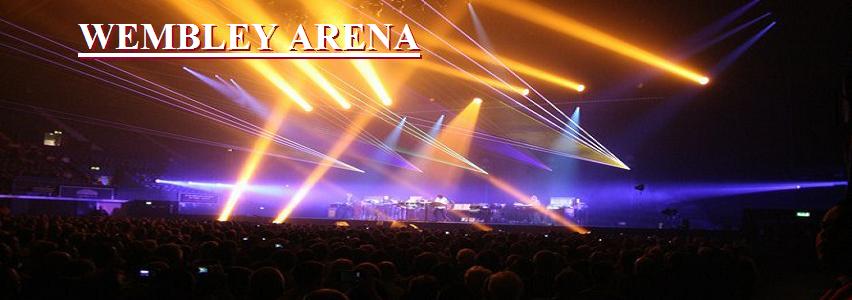Originally known as the Empire Pool, Wembley Arena was built for the Empire Games of 1934,
on part of the site of the lakes which had been laid out for the British Empire Exhibition ten years
earlier.
The necessity was for a swimming pool 200ft x 60ft which could be decorated over for use as an
ice rink or performance arena. The design commission went to Sir Owen Williams who had
played a key part in the construction of the Empire Exhibition. The Empire Pool provided Williams
individually with an ideal opportunity to demonstrate how concrete engineering could generate
explicit and attractive architecture. Consequently, the treatment of the Arena paid no regard
whatsoever to the adjacent Palaces of Art and of Industry that had survived from the Empire
Exhibition. Likewise, although the Empire Pool was sited close to the Empire Stadium, Williams.
scheme turned its back to the Stadium and its main approaches.
The Arena building was thus considered of as an adaptable, all-purpose performance space. It
was built to be primarily a swimming pool but it could also be converted to an arena for sporting
events and performances. The swimming pool was closed at the outbreak of war (1939) and was
subsequently only used as a pool for the Olympic Games (1948). In c.1956 a permanent timber
floor was installed. In 1973 that timber floor was replaced by the present floor, built of Bison slabs
on steel A-frames supported off the bottom of the swimming pool.
The other main changes made to the building can be summarised as follows:
• The infilling (with wood-wool slab) of the glazed areas in the roof, and also the infilling of
the windows in the end walls (all the windows had been painted over for the black-out in
WWII);
• The external post-tensioning of the roof frames at the east end, in order to give added
strength sufficient to carry a lighting grid in the Arena;
• The installation of air-changing equipment, replaced by comfort cooling equipment in
1996;
• Numerous small-scale changes, especially in the end annexes and the changing /
dressing room areas.
None of these changes has compromised the fundamental special interest of the building or the
way it is used, but they have seriously affected the present appearance of the east end of the
building in particular.
The Wembley Arena building was listed Grade II in 1976. The main aspect of the building.s special interest is its technical virtuosity in its adventurous use
of reinforced concrete. The roof structure was highly inventive and achieved the greatest span for
its time. It successfully answered the need for vast unobstructed space which could be
constructed in less than a year. As well as making a striking impression on those who visited the
building when it was new, its innovative structure has continued to be admired by engineers and
architects. The rhythm of fins and ribs, with the water towers acting as prominent punctuation
marks at the corners, and the annex elements at either end providing a structurally stabilizing
influence, combine to create a remarkably robust and distinctive architectural and engineering
expression.
The Arena building is rich in what may be defined as historic associations too. In its earlier years
it was the venue for many of the country.s major sporting events; not just the swimming events at
the 1934 Empire Games and the 1948 Olympics but also boxing, cycling, indoor tennis and other
sports. In more recent years the Arena has become a major venue for popular music
performances and events. The last ever UK live performance by The Beatles took place in the
venue in 1966 and the Rolling Stones have played the Arena fourteen times since 1964.

No comments:
Post a Comment